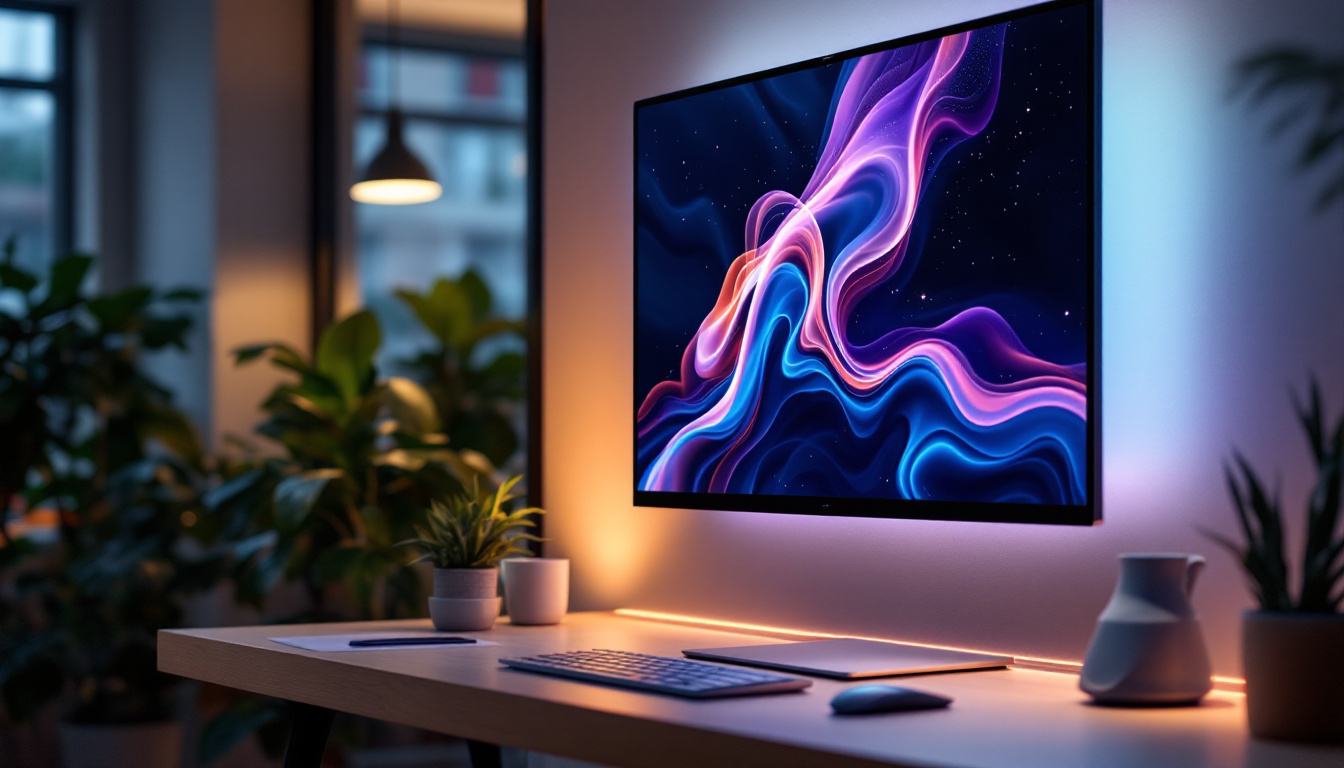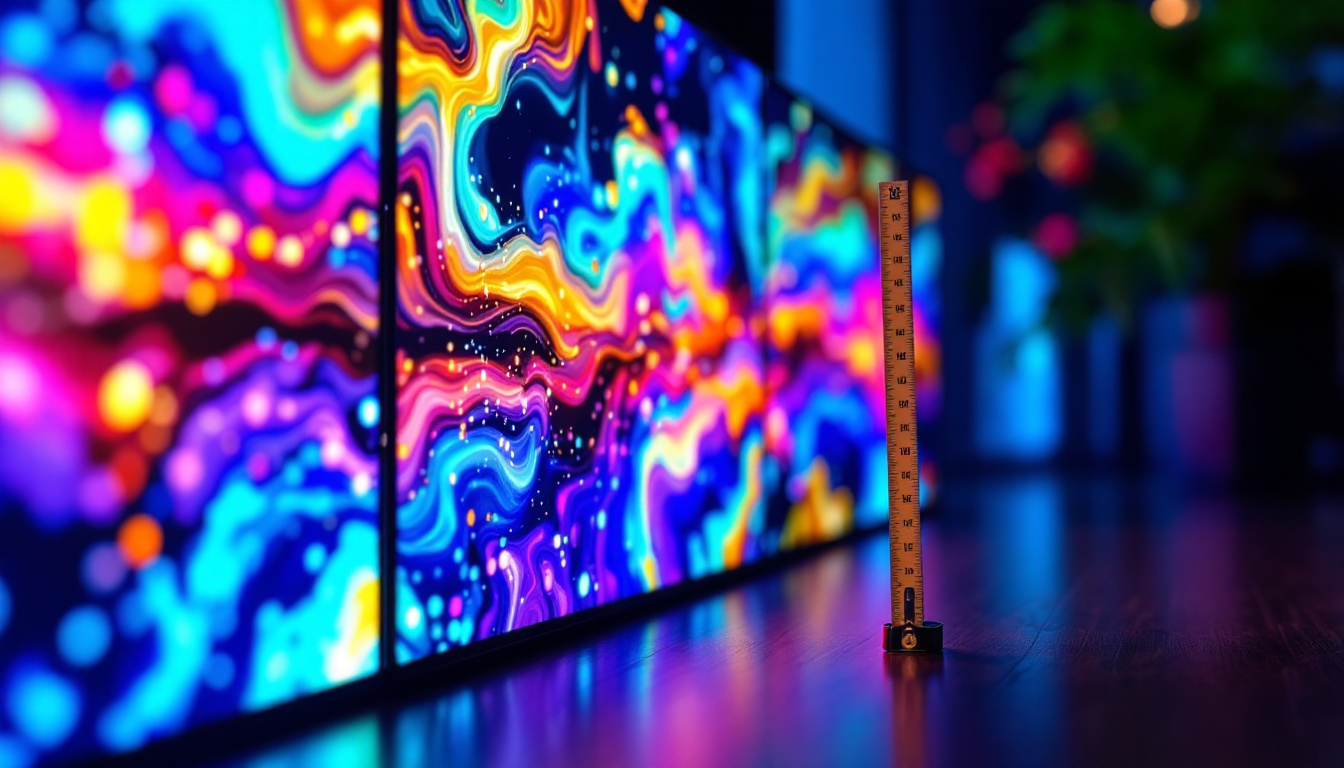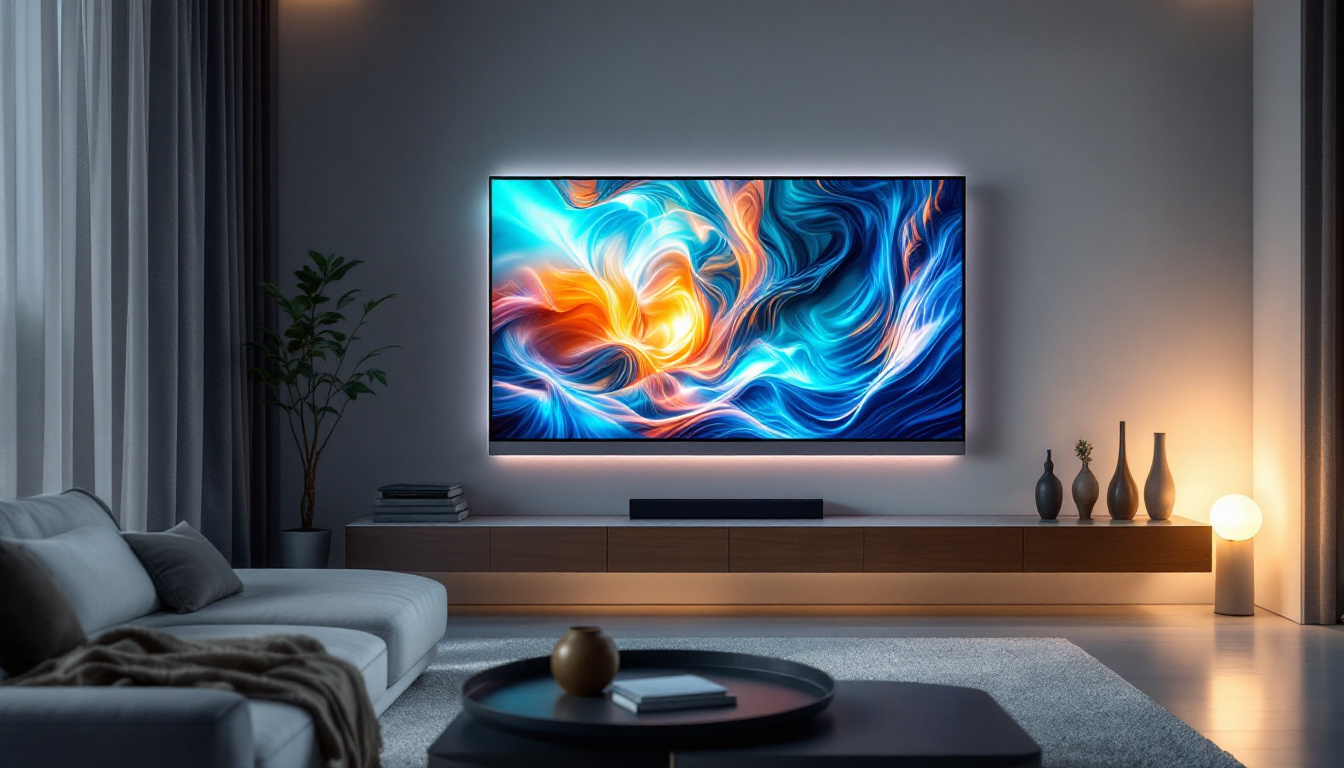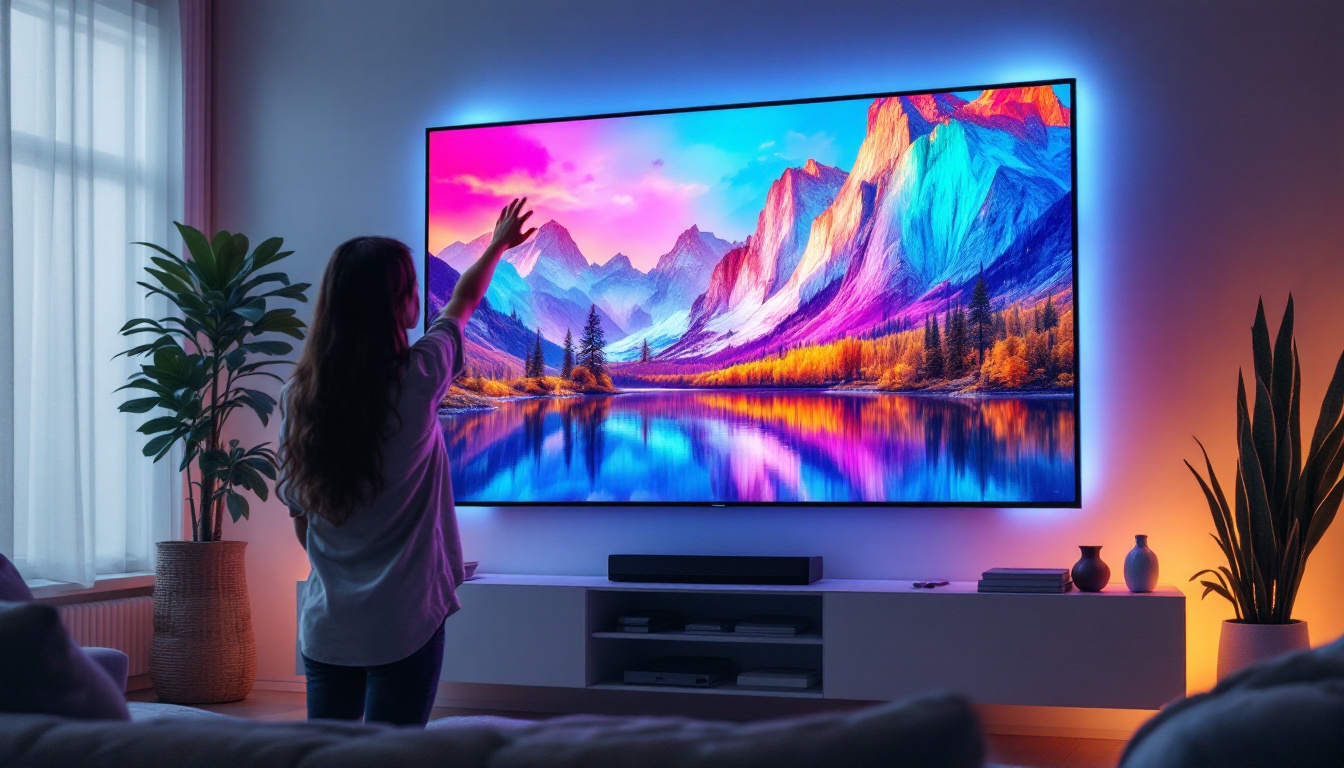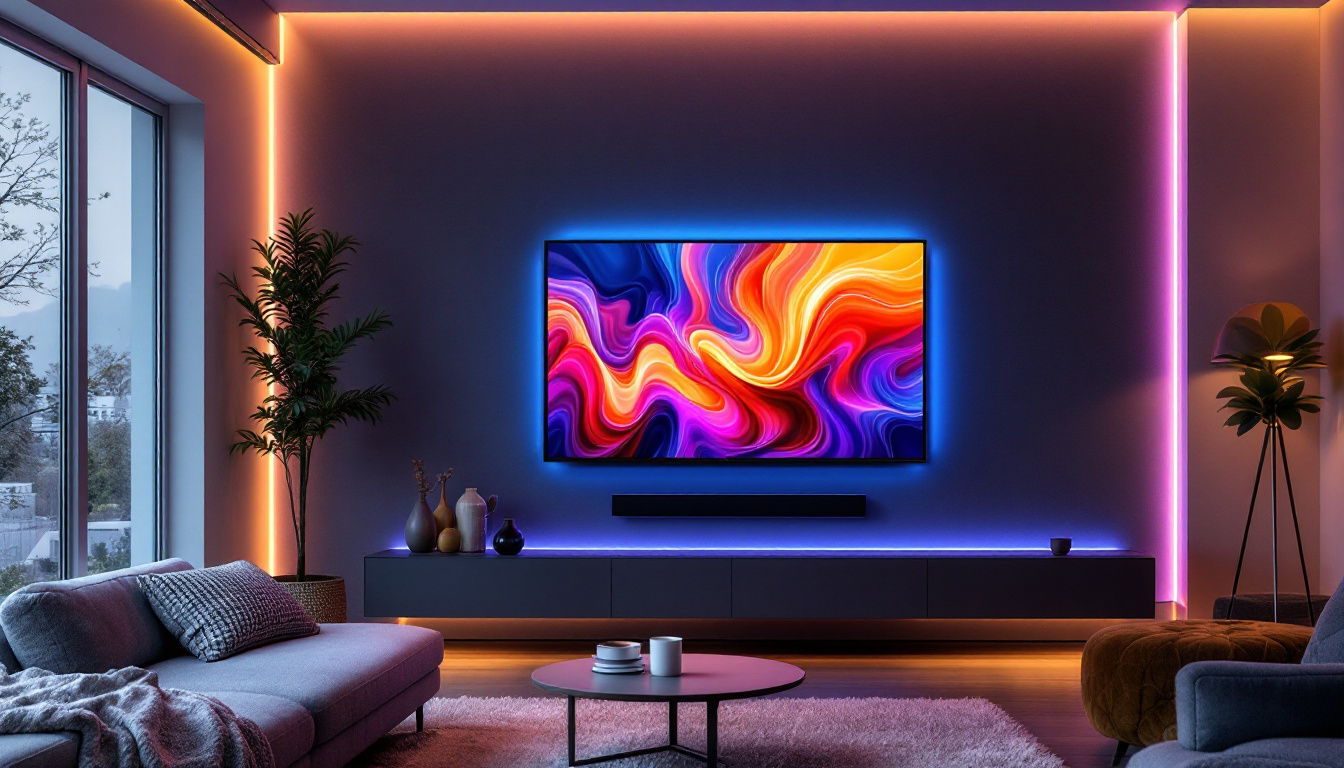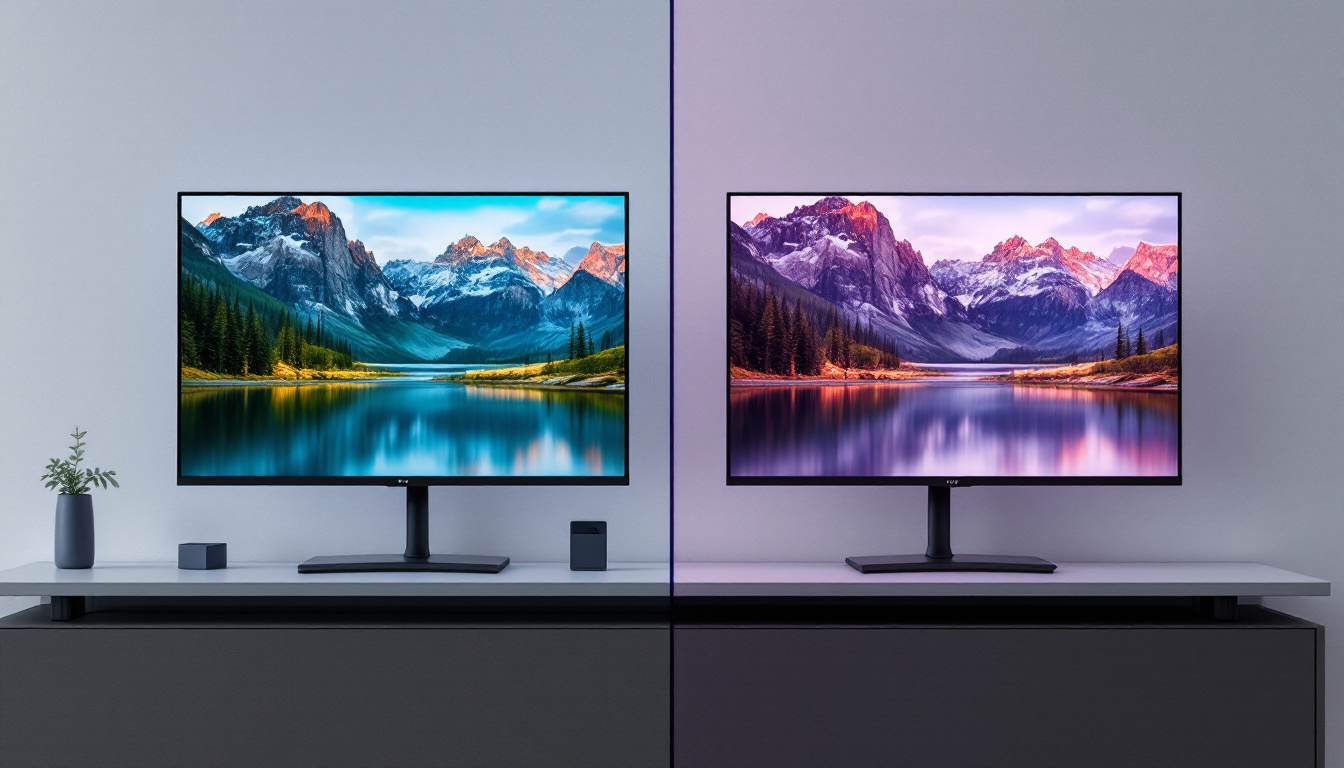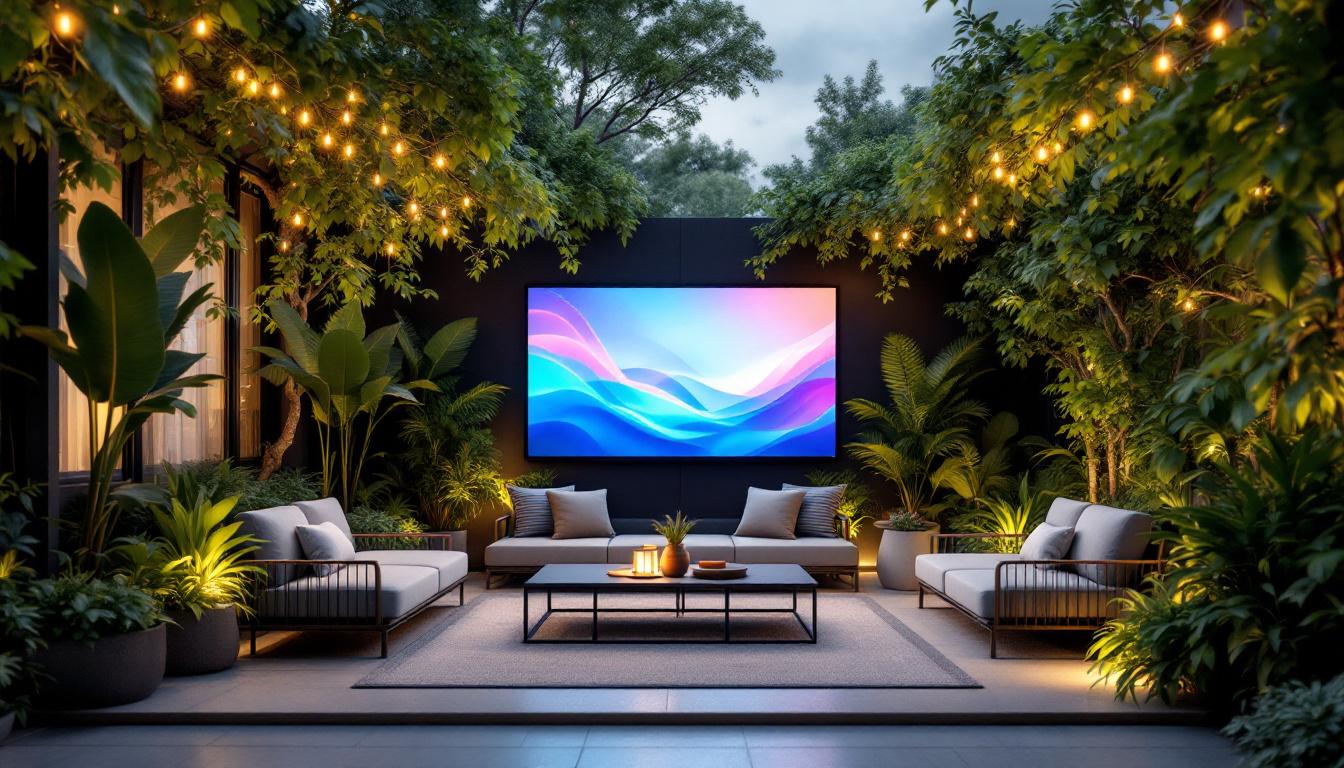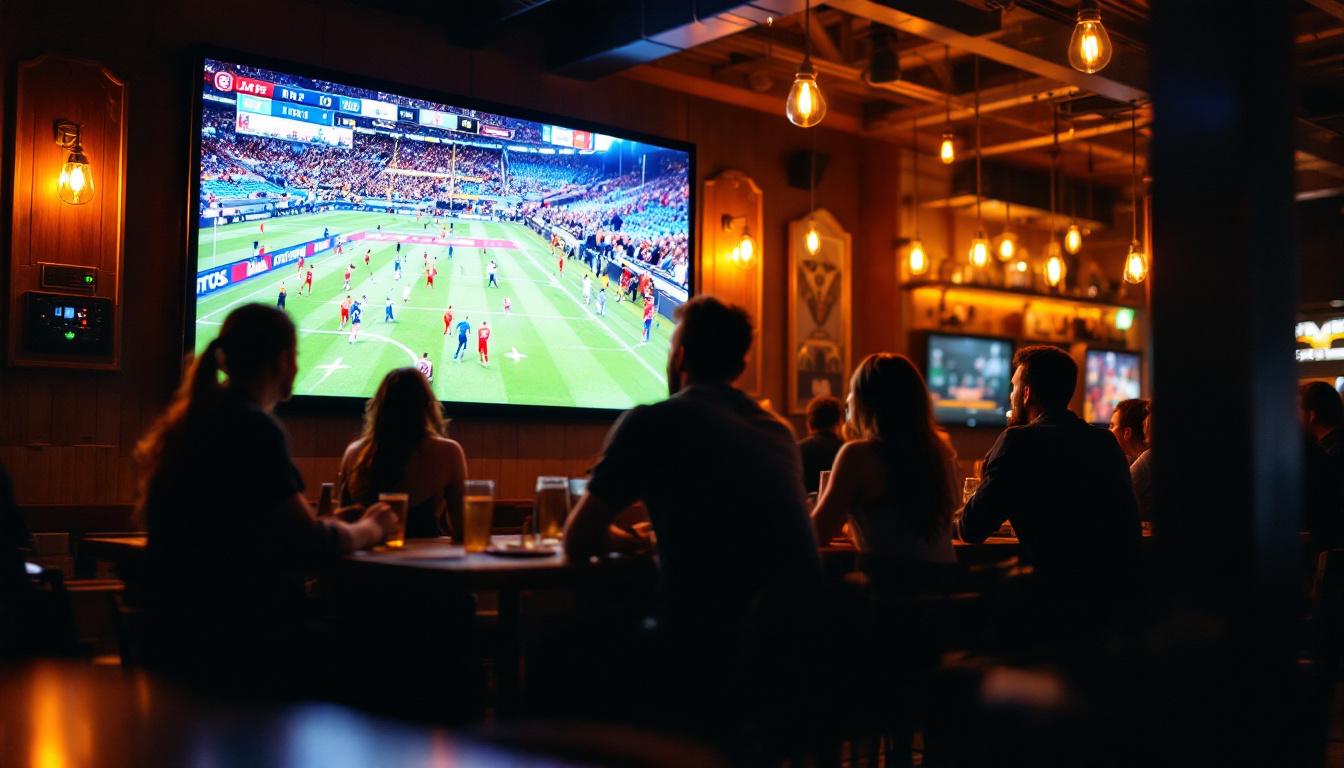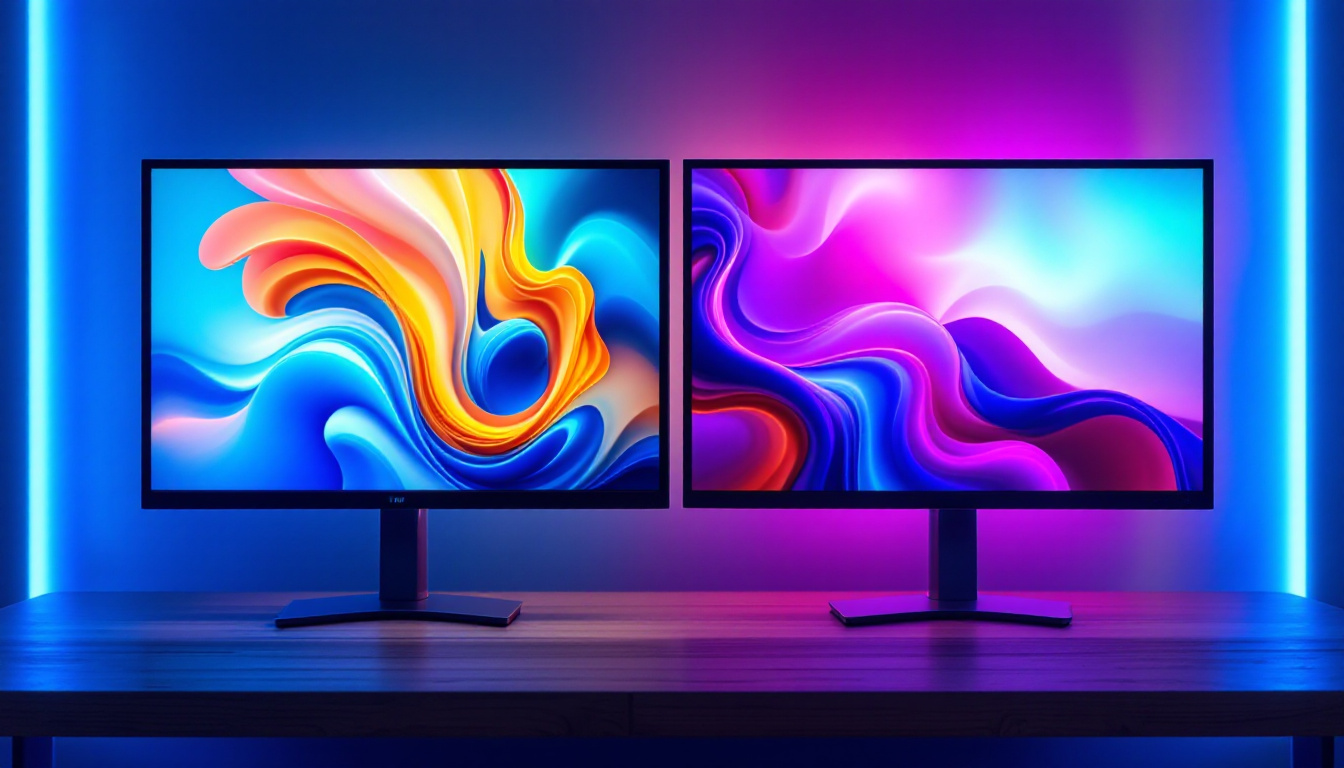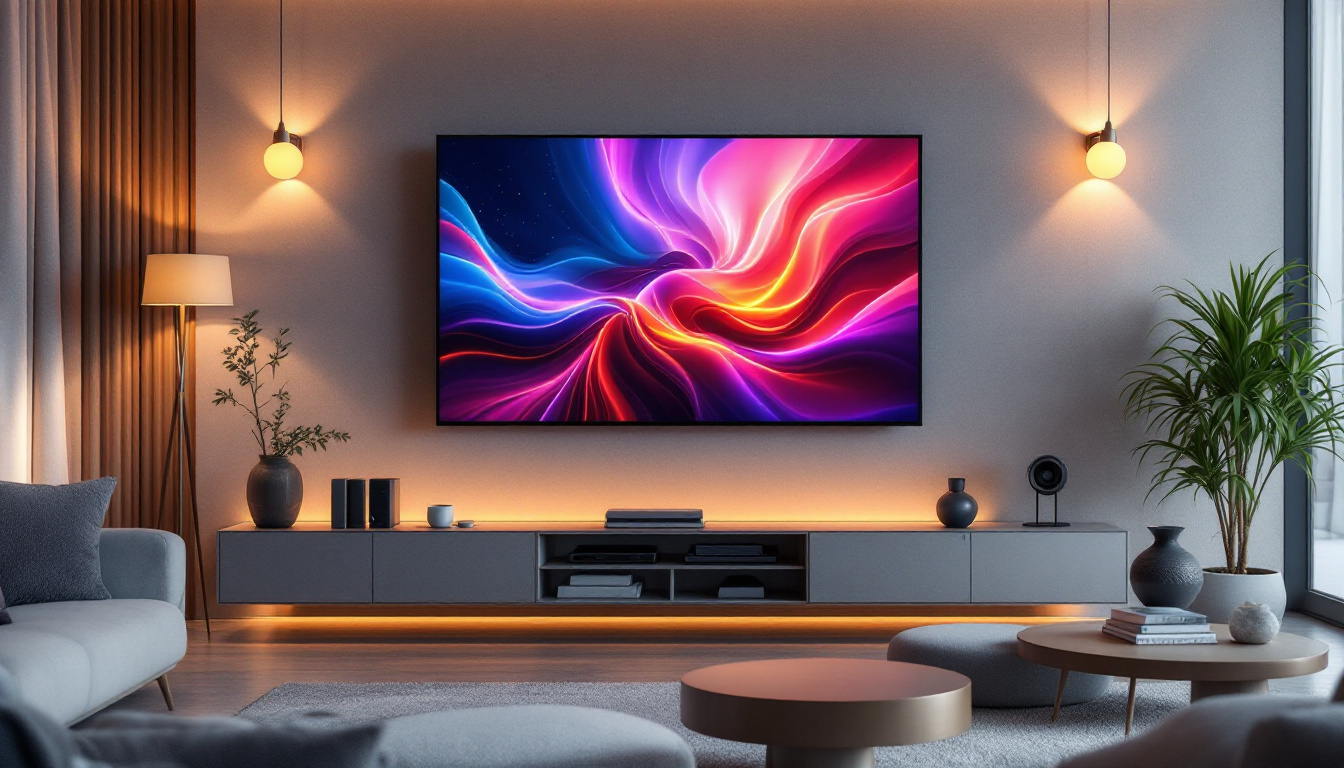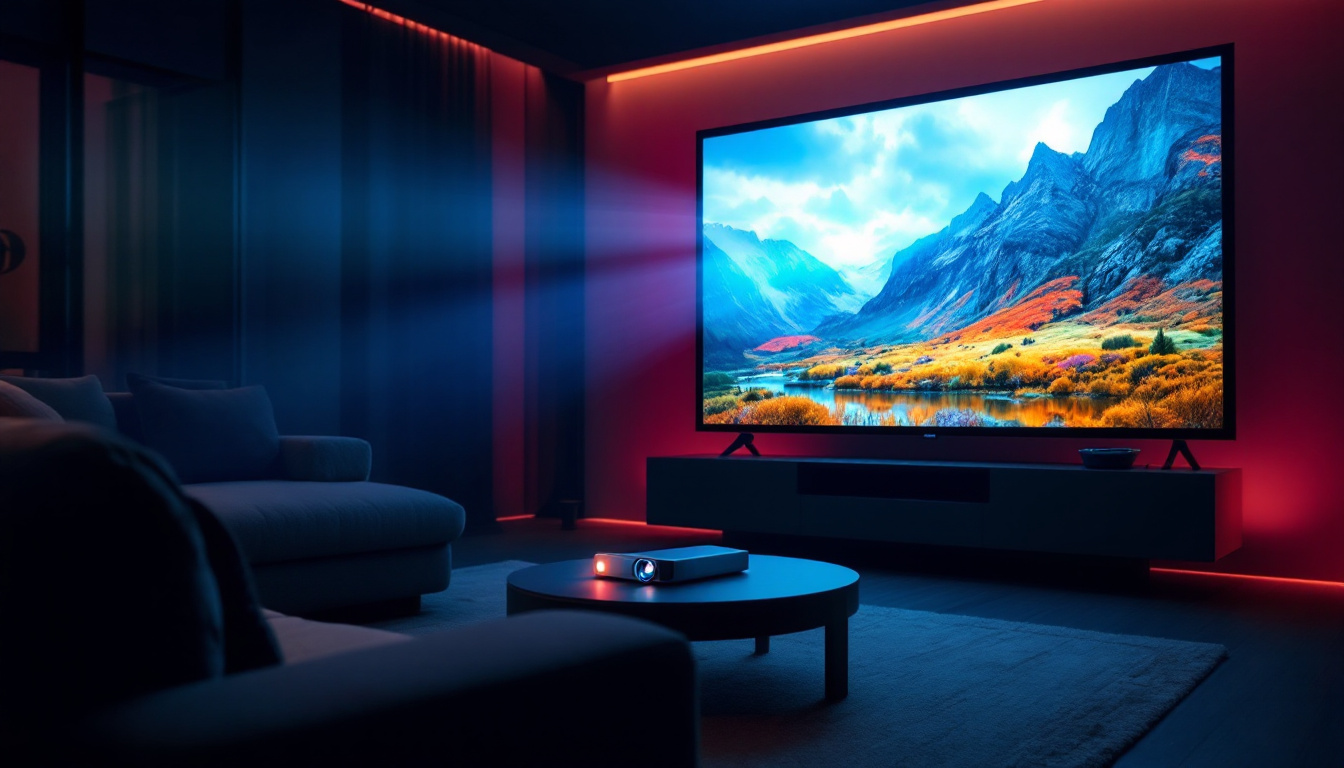In an era where space optimization and aesthetic appeal are paramount, thin monitors designed for wall mounting have become increasingly popular. These sleek devices not only save valuable desk space but also enhance the visual experience in various settings, from homes to corporate environments. This article delves into the world of thin LED monitors, exploring their features, benefits, and considerations for wall mounting.
Understanding LED Technology
Light Emitting Diode (LED) technology has revolutionized the display industry, offering brighter, more vibrant images while consuming less power compared to traditional LCD screens. LED monitors utilize an array of tiny diodes to produce light, which enhances color accuracy and contrast. This advancement has not only improved the viewing experience for consumers but has also paved the way for innovations in design and functionality across various devices.
The Basics of LED Displays
LED displays can be categorized into two main types: edge-lit and backlit. Edge-lit monitors have LEDs positioned along the edges of the screen, allowing for a thinner profile. In contrast, backlit monitors feature a full array of LEDs behind the screen, providing uniform brightness and better color performance. Understanding these differences is crucial when selecting a monitor for wall mounting. Furthermore, advancements in technology have led to the emergence of OLED (Organic LED) displays, which offer even deeper blacks and more vibrant colors by allowing individual pixels to emit their own light, eliminating the need for a backlight altogether.
Benefits of LED Technology
One of the most significant advantages of LED technology is its energy efficiency. LED monitors consume less power, which not only reduces electricity bills but also contributes to a lower carbon footprint. Additionally, LED displays offer superior brightness levels, making them ideal for environments with high ambient light. Another noteworthy benefit is their longevity; LED screens typically have a lifespan of up to 50,000 hours or more, significantly outlasting traditional display technologies. This durability makes them a cost-effective choice for both personal and professional use.
Applications of LED Monitors
Thin LED monitors are versatile and can be used in various applications. In commercial settings, they are often employed for digital signage, presentations, and video conferencing. In residential environments, they serve as entertainment hubs for streaming, gaming, and home theater setups. Beyond these common uses, LED technology is also making strides in the field of art and design, where artists and designers are utilizing LED displays to create interactive installations. The ability to manipulate color and brightness in real-time allows for dynamic presentations that can engage audiences in ways traditional media cannot. Additionally, the rise of smart LED displays has integrated features such as touch sensitivity and connectivity options, further expanding their utility in both home and business environments.
Why Choose a Thin Monitor for Wall Mounting?
Thin monitors are specifically designed to be mounted on walls, providing a streamlined look that complements modern interior design. Their lightweight construction and minimalistic design make them an excellent choice for both residential and commercial spaces.
Space-Saving Design
One of the most compelling reasons to choose a thin monitor for wall mounting is the space-saving aspect. By eliminating the need for bulky stands or furniture, these monitors free up valuable floor space, allowing for more flexible room layouts. This is particularly advantageous in smaller rooms where every inch counts.
Aesthetic Appeal
Thin monitors offer a sleek, contemporary look that can enhance the overall aesthetic of a room. Whether mounted in a living room, office, or retail space, these displays can serve as a focal point, blending seamlessly with the surrounding decor. The clean lines and minimalist design contribute to a modern ambiance.
Improved Viewing Experience
When mounted at the appropriate height and angle, thin monitors can significantly improve the viewing experience. By positioning the screen at eye level, viewers can enjoy a more comfortable and immersive experience, whether watching movies, playing games, or conducting business presentations.
Key Features to Consider
When selecting a thin monitor for wall mounting, several key features should be taken into account. These features can greatly influence the performance and usability of the monitor in various settings.
Screen Size and Resolution
Screen size and resolution are critical factors that affect the viewing experience. Thin monitors come in various sizes, typically ranging from 24 inches to 75 inches or more. Higher resolutions, such as Full HD (1080p) or 4K (2160p), provide sharper images and more detail, making them ideal for applications that require high visual fidelity.
Connectivity Options
Modern thin monitors offer a range of connectivity options, including HDMI, DisplayPort, and USB-C. It’s essential to ensure that the chosen monitor has the necessary ports to connect to other devices, such as computers, gaming consoles, or streaming devices. Additionally, built-in wireless connectivity options, such as Wi-Fi and Bluetooth, can enhance versatility.
Mounting Compatibility
Not all monitors are created equal when it comes to mounting. Before purchasing a thin monitor, it is crucial to check its VESA compatibility, which determines how the monitor can be attached to wall mounts. Most thin monitors adhere to standard VESA sizes, making it easier to find a suitable mount.
Installation and Setup
Installing a thin monitor on a wall may seem daunting, but with the right tools and guidance, it can be a straightforward process. Proper installation ensures safety and optimal viewing angles.
Choosing the Right Wall Mount
When selecting a wall mount, consider the weight and size of the monitor. Fixed mounts provide a sleek look but limit adjustability, while tilting and full-motion mounts offer flexibility in positioning. Ensure the mount is rated for the monitor’s weight and size to avoid any safety hazards.
Preparing the Wall
Before installation, it is essential to prepare the wall. Identify the desired location for the monitor and ensure that it is free from any obstructions. Use a stud finder to locate wall studs for secure mounting, as drywall alone may not support the weight of the monitor.
Connecting Cables
Once the monitor is mounted, connect the necessary cables. It is advisable to use cable management solutions to keep cords organized and prevent clutter. This not only enhances the visual appeal but also makes it easier to access connections when needed.
Maintenance and Care
To ensure the longevity and performance of thin monitors, regular maintenance and care are essential. Simple practices can keep the monitor in optimal condition.
Cleaning the Screen
Dust and fingerprints can accumulate on the screen, affecting image quality. Use a microfiber cloth and a gentle screen cleaner to wipe the surface. Avoid using harsh chemicals or abrasive materials, as they can damage the screen.
Software Updates
For smart monitors with built-in operating systems, regular software updates are crucial. These updates can improve performance, fix bugs, and enhance security. Check the manufacturer’s website or the monitor’s settings menu for available updates.
Checking Connections
Periodically check all connections to ensure they are secure. Loose cables can lead to display issues or signal loss. If any problems arise, troubleshooting should begin with checking the connections before exploring other solutions.
Common Applications of Thin Monitors
Thin monitors are versatile and can be utilized in various environments. Their adaptability makes them suitable for numerous applications, enhancing functionality and aesthetics.
Home Entertainment
In residential settings, thin monitors serve as the centerpiece for home entertainment systems. With their high-resolution displays, they are perfect for streaming movies, playing video games, or enjoying sports events. Their wall-mounted design allows for optimal viewing angles, creating a cinema-like experience at home.
Corporate Use
In the corporate world, thin monitors are essential for presentations, video conferencing, and collaborative work. Their sleek design fits well in modern office environments, while their high-quality displays ensure that presentations are clear and engaging. Wall-mounted monitors can also save desk space, contributing to a more organized workspace.
Retail and Public Spaces
Thin monitors are increasingly used in retail and public spaces for digital signage. Whether displaying promotional content or providing information, these monitors attract attention and engage customers. Their ability to be mounted in high-traffic areas maximizes visibility and enhances the overall customer experience.
Future Trends in Thin Monitor Technology
The technology behind thin monitors continues to evolve, with exciting advancements on the horizon. Understanding these trends can help consumers make informed decisions when purchasing new displays.
Enhanced Display Technologies
Future thin monitors may incorporate advanced display technologies such as OLED (Organic Light Emitting Diode) and MicroLED. These technologies promise even better color accuracy, contrast ratios, and energy efficiency, further enhancing the visual experience.
Smart Features
As smart technology becomes more prevalent, future thin monitors are likely to include integrated smart features. This may include voice control, built-in streaming services, and enhanced connectivity options, making them more versatile and user-friendly.
Eco-Friendly Innovations
With a growing emphasis on sustainability, manufacturers are focusing on eco-friendly innovations. Future thin monitors may utilize recyclable materials, energy-efficient components, and sustainable manufacturing practices, appealing to environmentally conscious consumers.
Conclusion
Thin monitors for wall mounting represent a perfect blend of functionality, aesthetics, and advanced technology. Their space-saving design, superior image quality, and versatility make them an excellent choice for various applications, from home entertainment to corporate use. As technology continues to advance, these monitors will only become more capable, offering consumers even more options to enhance their viewing experience.
Investing in a thin LED monitor is not just about acquiring a display; it’s about embracing a modern lifestyle that values efficiency, style, and innovation. Whether for personal use or professional environments, the benefits of thin monitors are undeniable, making them a worthwhile consideration for anyone looking to upgrade their visual technology.
Discover LumenMatrix’s Advanced LED Displays
Ready to elevate your space with the latest in LED display technology? LumenMatrix offers a wide array of innovative solutions tailored to meet your needs. From captivating Indoor LED Wall Displays to dynamic Outdoor LED Wall Displays, and from versatile Vehicle LED Displays to sleek LED Poster Displays, our products are designed to enhance brand visibility and create immersive visual experiences. Embrace the future of visual communication with LumenMatrix’s cutting-edge digital signage and LED display solutions. Check out LumenMatrix LED Display Solutions today and transform the way you share your message.

